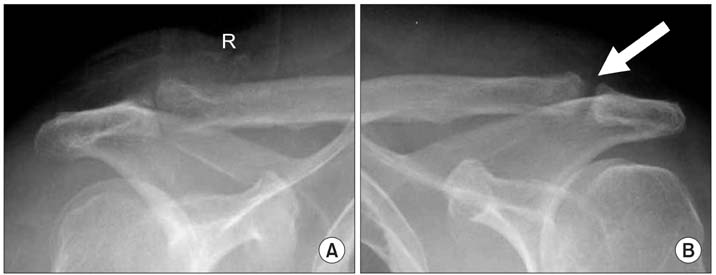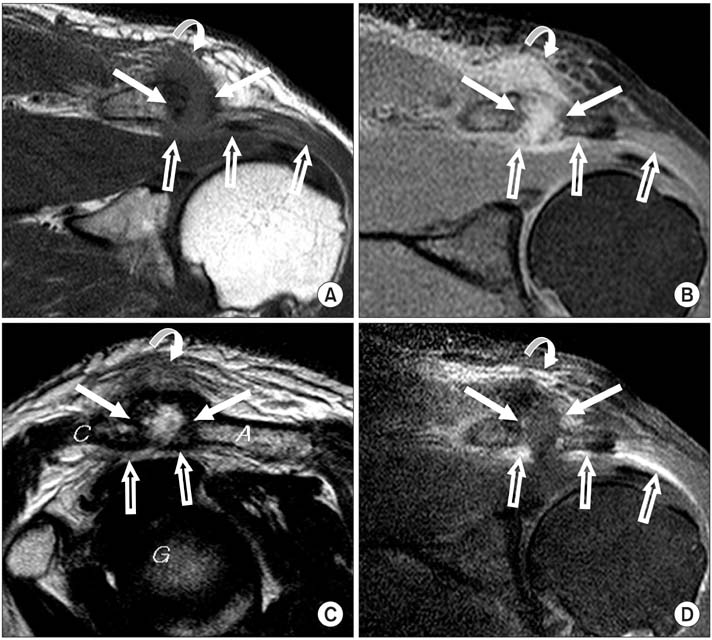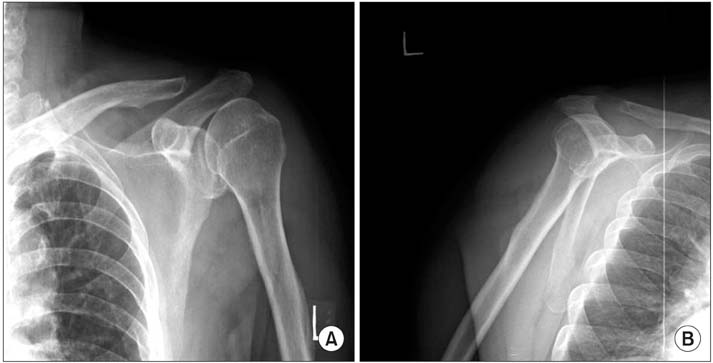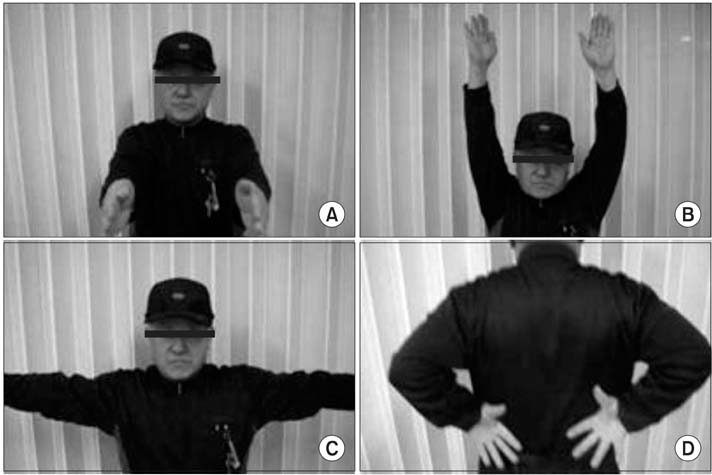Clin Orthop Surg.
2010 Sep;2(3):186-190. 10.4055/cios.2010.2.3.186.
Arthroscopic Treatment of Septic Arthritis of Acromioclavicular Joint
- Affiliations
-
- 1Department of Orthopedic Surgery, Kangnam Sacred Heart Hospital, College of Medicine, Hallym University, Seoul, Korea. chungkjmd@dreamwiz.com
- 2Department of Radiology, Hallym University Sacred Heart Hospital, College of Medicine, Hallym University, Seoul, Korea.
- KMID: 999439
- DOI: http://doi.org/10.4055/cios.2010.2.3.186
Abstract
- Septic arthritis requires an early diagnosis and proper treatment to prevent the destruction of articular cartilage and joint contracture. This paper presents a rare case of septic arthritis of the acromioclavicular joint that was treated with arthroscopic debridement and resection of the distal clavicle.
Keyword
MeSH Terms
Figure
Cited by 1 articles
-
Pharmacologic treatment of osteoarthritis
Seung-Hoon Baek, Shin-Yoon Kim
J Korean Med Assoc. 2013;56(12):1123-1131. doi: 10.5124/jkma.2013.56.12.1123.
Reference
-
1. Bremell T, Abdelnour A, Tarkowski A. Histopathological and serological progression of experimental Staphylococcus aureus arthritis. Infect Immun. 1992. 60(7):2976–2985.
Article2. Adams R, McDonald M. Cryptococcal arthritis of the acromio-clavicular joint. N C Med J. 1984. 45(1):23–24.3. Sobrino J, Bosch X, Wennberg P, Villalta J, Grau JM. Septic arthritis secondary to group C streptococcus typed as Streptococcus equisimilis. J Rheumatol. 1991. 18(3):485–486.4. Chirag AS, Ropiak CR, Bosco Iii JA, Egol KA. Septic arthritis of the acromioclavicular joint: a report of four cases. Bull NYU Hosp Jt Dis. 2007. 65(4):308–311.5. Park AL, Dlabach JA. Canale ST, editor. Infectious arthritis. Campbell's operative orthopaedics. 2003. St. Louis: Mosby;685–711.6. Tan V, Pepe MD, Esterhai JL Jr. Iannotti JP, Williams GR, editors. Sepsis of the shoulder girdle. Disorders of the shoulder: diagnosis and management. 1999. Philadelphia: Lippincott Williams & Wilkins;951–973.7. Resnick D. Bone and joint imaging. 1996. 2nd ed. Philadelphia: WB Saunders.8. Widman DS, Craig JG, van Holsbeeck MT. Sonographic detection, evaluation and aspiration of infected acromio-clavicular joints. Skeletal Radiol. 2001. 30(7):388–392.
Article9. Nelson MC, Leather GP, Nirschl RP, Pettrone FA, Freedman MT. Evaluation of the painful shoulder: a prospective comparison of magnetic resonance imaging, computerized tomographic arthrography, ultrasonography, and operative findings. J Bone Joint Surg Am. 1991. 73(5):707–716.
Article
- Full Text Links
- Actions
-
Cited
- CITED
-
- Close
- Share
- Similar articles
-
- Arthroscopic Treatment of Septic Arthritis of the Hip in a Child: A Case Report
- Treatment of the Septic Arthritis in Shoulder Joint after Arthroscopic Rotator Cuff Repair
- Arthroscopic Treatment of Acromioclavicular Joint Dislocations
- Acromioclavicular Septic Arthritis and Sternoclavicular Septic Arthritis with Contiguous Pyomyositis
- Arthroscopic Treatment for Septic Arthritis of the Shoulder in Neonates






